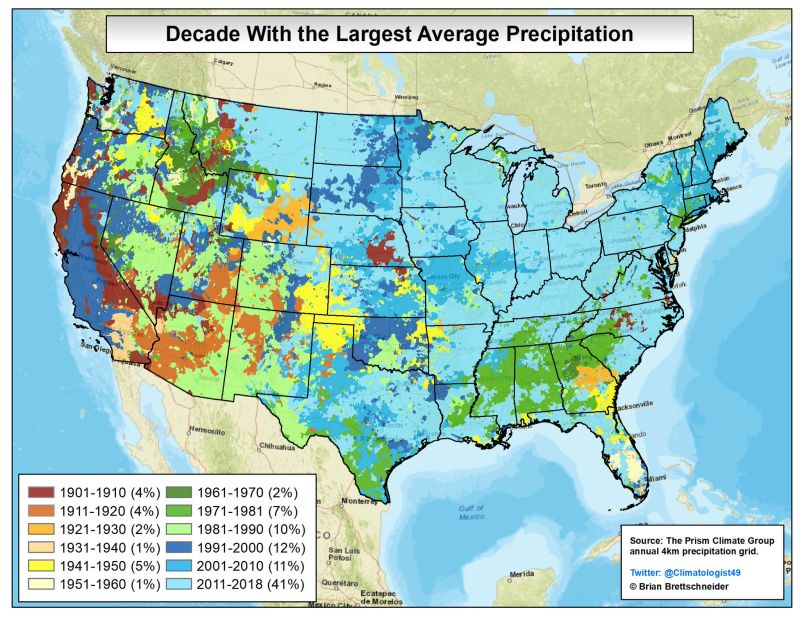
SPONSORED CONTENT Keep updated on the latest weather trends and outlooks with your personal daily weather planner—delivered each day via email. To subscribe to this free service, click here.
By the Numbers for June 7, 2019: NOAA’s May Rankings Are Out. You can probably guess lots of records were broken in May
Second wettest MONTH on record
The May precipitation total for the contiguous U.S. was 4.41 inches, 1.50 inches above average, and ranked second wettest month (for all months) in the 125-year period we’ve been tracking precipitation. The current record holder is May 2015 at 4.44 inches.
51% of Oklahoma Counties
Forty counties in Oklahoma ranked in the top five (out of 125 years) for precipitation totals in May. Fifteen counties saw their wettest May on record. Too many counties to list, but if you were to draw an arc from Kingfisher County to Craig County (Central to northeast Oklahoma) you would hit most of the counties that broke records. Using the state-wide average, Oklahoma has also observed it wettest 8-month period on record with a staggering 12 inches of precipitation over what would normally be expected. The 8-month period is significant because that tracks the Water Year (Oct-present).
4 East Texas Counties
Four East Texas Counties saw their record wettest May on record. The counties include Bowie, Rains, Van Zandt, and Wood Counties. Bowie County was 10 inches over what normally falls from the sky in May.
2011-2018 turning out to be a wet decade
For those who experienced first-hand the 2011 Southern Plains drought, it’s hard to see how the current decade spanning 2011-2018 is turning out to be a wet decade. The data do not lie, though, and of course we do have this year, which is a good example. It’s somewhat of an esoteric statistic (even for climatologist) but for 41% of the country, this decade, so far, has seen the highest average precipitation of any decade since 1900. Oklahoma is one of the exceptions here, though. For them, the 1980s and 1990s were a wet period. The statistic comes from Brian Brettschneider at the University of Alaska. You can see the map below.

